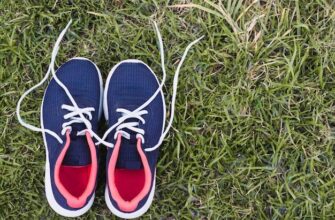Plantar Fascia Ayurvedic Treatment
Introduction
Plantar fasciitis is a common condition that affects the plantar fascia, a thick band of tissue located in the bottom of the foot. It is characterized by pain and inflammation in the heel and arch of the foot, making it difficult to walk or stand for long periods of time. While there are various treatment options available, Ayurveda offers a holistic approach to healing and managing plantar fasciitis.
Understanding Plantar Fasciitis
Plantar fasciitis occurs when the plantar fascia becomes irritated and inflamed due to excessive strain or repetitive use. This can happen as a result of activities such as running, walking or standing for long periods, or wearing unsupportive footwear. The condition commonly affects athletes, overweight individuals, and those who have tight calf muscles or high arches.
Ayurvedic Perspective on Plantar Fasciitis
According to Ayurveda, plantar fasciitis is primarily caused by an imbalance of the Vata dosha. Vata represents the Air and Space elements in the body and is responsible for movement, flexibility, and balance. When Vata becomes imbalanced, it can lead to dryness, stiffness, and inflammation, which can manifest as plantar fasciitis.
Treatment Approaches in Ayurveda
Ayurvedic treatment for plantar fasciitis focuses on addressing the root cause of the condition and restoring balance to the body. Here are some common approaches used in Ayurveda:
1. Panchakarma Therapy
Panchakarma is a detoxification and rejuvenation therapy in Ayurveda. It involves a series of therapeutic procedures, including oil massages, herbal steam baths, and nasal administrations, to eliminate toxins from the body and enhance overall well-being. Panchakarma can help reduce inflammation, improve blood circulation, and provide relief from plantar fasciitis symptoms.
2. Abhyanga
Abhyanga is a form of Ayurvedic massage that involves applying warm herbal oils to the entire body. This therapy helps to nourish and strengthen the tissues, improve circulation, and reduce pain and inflammation. Massaging the feet with specific Ayurvedic oils can promote healing and alleviate the symptoms of plantar fasciitis.
3. Basti Therapy
Basti therapy involves the administration of herbal enemas to cleanse and strengthen the colon. It is an effective treatment for Vata-related imbalances and can help alleviate the symptoms of plantar fasciitis. Basti therapy can also improve digestion, which is important for overall health and well-being.
4. Shirodhara
Shirodhara is a deeply relaxing Ayurvedic therapy that involves pouring a continuous stream of warm herbal oil onto the forehead. This calming treatment helps to balance the nervous system and reduce stress, which can contribute to the development of plantar fasciitis. Shirodhara can also improve sleep quality, which is essential for proper healing.
5. Yoga and Stretching
Yoga and stretching exercises are an important part of Ayurvedic treatment for plantar fasciitis. Gentle stretches and poses can help improve flexibility, strengthen the muscles and ligaments in the feet, and reduce pain and inflammation. Some recommended yoga asanas for plantar fasciitis include Vrikshasana (Tree Pose), Trikonasana (Triangle Pose), and Padahastasana (Standing Forward Bend).
6. Ayurvedic Herbal Remedies
Ayurvedic herbal remedies can be used internally and externally to reduce inflammation and promote healing in plantar fasciitis. Some commonly used herbs include Ashwagandha, Guggul, Shallaki (Boswellia), and Turmeric. These herbs have anti-inflammatory properties and can provide relief from pain and stiffness in the feet.
7. Dietary and Lifestyle Changes
In Ayurveda, diet and lifestyle play a crucial role in maintaining balance and preventing imbalances. Some dietary recommendations for managing plantar fasciitis include avoiding spicy and fried foods, incorporating anti-inflammatory foods such as turmeric and ginger into the diet, and staying hydrated. It is also important to maintain a regular sleep schedule, practice stress management techniques, and avoid excessive walking or standing for long periods.
8. Footwear Recommendations
In addition to Ayurvedic treatments, wearing appropriate footwear is crucial for managing plantar fasciitis. It is recommended to choose shoes that provide proper arch support, cushioning, and stability. Avoid high heels, flat shoes, or shoes with inadequate support, as they can exacerbate the symptoms of plantar fasciitis.
9. External Therapies
Apart from internal treatments, Ayurveda also utilizes various external therapies to manage plantar fasciitis. These may include the application of warm herbal poultices, herbal pastes, or medicated oils to the affected area. These therapies help reduce inflammation, improve blood circulation, and provide relief from pain.
10. Regular Follow-up and Maintenance
Once the acute symptoms of plantar fasciitis have subsided, it is important to continue with regular follow-up visits and maintenance therapies to prevent the recurrence of the condition. This may include periodic massages, stretching exercises, lifestyle modifications, and taking herbal supplements as recommended by an Ayurvedic practitioner.
Frequently Asked Questions (FAQs)
1. Can Ayurveda cure plantar fasciitis?
Yes, Ayurveda offers a holistic approach to healing and managing plantar fasciitis. Proper diagnosis, customized treatment plans, and a combination of therapies, including Panchakarma, Abhyanga, herbal remedies, and lifestyle modifications, can help alleviate the symptoms and promote healing.
2. How long does it take to see results with Ayurvedic treatment?
The duration of treatment may vary depending on the severity of the condition and individual factors. In general, individuals may start experiencing relief within a few weeks of starting Ayurvedic treatment. However, for long-lasting results, it is recommended to continue with regular follow-up visits and maintenance therapies as advised by an Ayurvedic practitioner.
3. Are there any dietary restrictions during Ayurvedic treatment?
While undergoing Ayurvedic treatment for plantar fasciitis, it is recommended to avoid spicy and fried foods that can aggravate inflammation. Including anti-inflammatory foods such as turmeric, ginger, and leafy greens in the diet can be beneficial. It is advisable to consult with an Ayurvedic practitioner for personalized dietary recommendations.
4. Can Ayurveda be used alongside conventional treatments for plantar fasciitis?
Ayurveda can complement conventional treatments for plantar fasciitis. It is important to inform both your Ayurvedic practitioner and primary healthcare provider about any ongoing treatments or medications you are taking to ensure a safe and integrated approach to healing.
5. Can Ayurvedic treatment prevent the recurrence of plantar fasciitis?
By addressing the root cause of plantar fasciitis and promoting overall well-being, Ayurvedic treatment can help reduce the likelihood of a recurrence. However, it is important to maintain a healthy lifestyle, wear appropriate footwear, and practice regular self-care to prevent the reoccurrence of the condition.
6. Is Ayurvedic treatment safe for everyone?
Ayurvedic treatment is generally safe; however, it is important to consult with a qualified Ayurvedic practitioner before starting any treatment. They will conduct an in-depth assessment of your condition and provide personalized recommendations based on your individual needs and health history.
7. Can Ayurvedic treatment provide immediate pain relief?
Ayurvedic treatments, such as external therapies and herbal remedies, can provide immediate relief from pain and inflammation in plantar fasciitis. However, it is important to note that results may vary depending on individual factors and the severity of the condition.
8. Can Ayurvedic treatment be used as a standalone treatment for plantar fasciitis?
Ayurvedic treatment can be used as a standalone treatment for mild to moderate cases of plantar fasciitis. However, in severe cases, it is recommended to seek medical advice and consider a multi-disciplinary approach that may include conventional treatments and physical therapies in addition to Ayurveda.
9. Can Ayurvedic treatment help with other foot conditions?
Yes, Ayurvedic treatment can be beneficial for managing various foot conditions apart from plantar fasciitis. Conditions such as flat feet, Achilles tendonitis, and bunions can also be addressed using Ayurvedic therapies and lifestyle modifications.
10. Is Ayurvedic treatment a permanent solution for plantar fasciitis?
Ayurvedic treatment can provide relief from the symptoms of plantar fasciitis and promote long-term healing. However, each individual is unique, and the effectiveness of treatment may vary. It is important to follow the advice of an Ayurvedic practitioner and make necessary lifestyle changes to prevent the recurrence of the condition.
Conclusion
Ayurveda offers a comprehensive and holistic approach to healing and managing plantar fasciitis. By addressing the root cause of the condition and promoting overall balance, Ayurvedic treatment can provide relief from pain, reduce inflammation, improve mobility, and prevent the recurrence of plantar fasciitis. It is important to seek advice from a qualified Ayurvedic practitioner for a personalized treatment plan that suits your individual needs and health condition. With patience, consistency, and the right approach, Ayurveda can be a valuable tool in your journey towards healing and well-being.















































